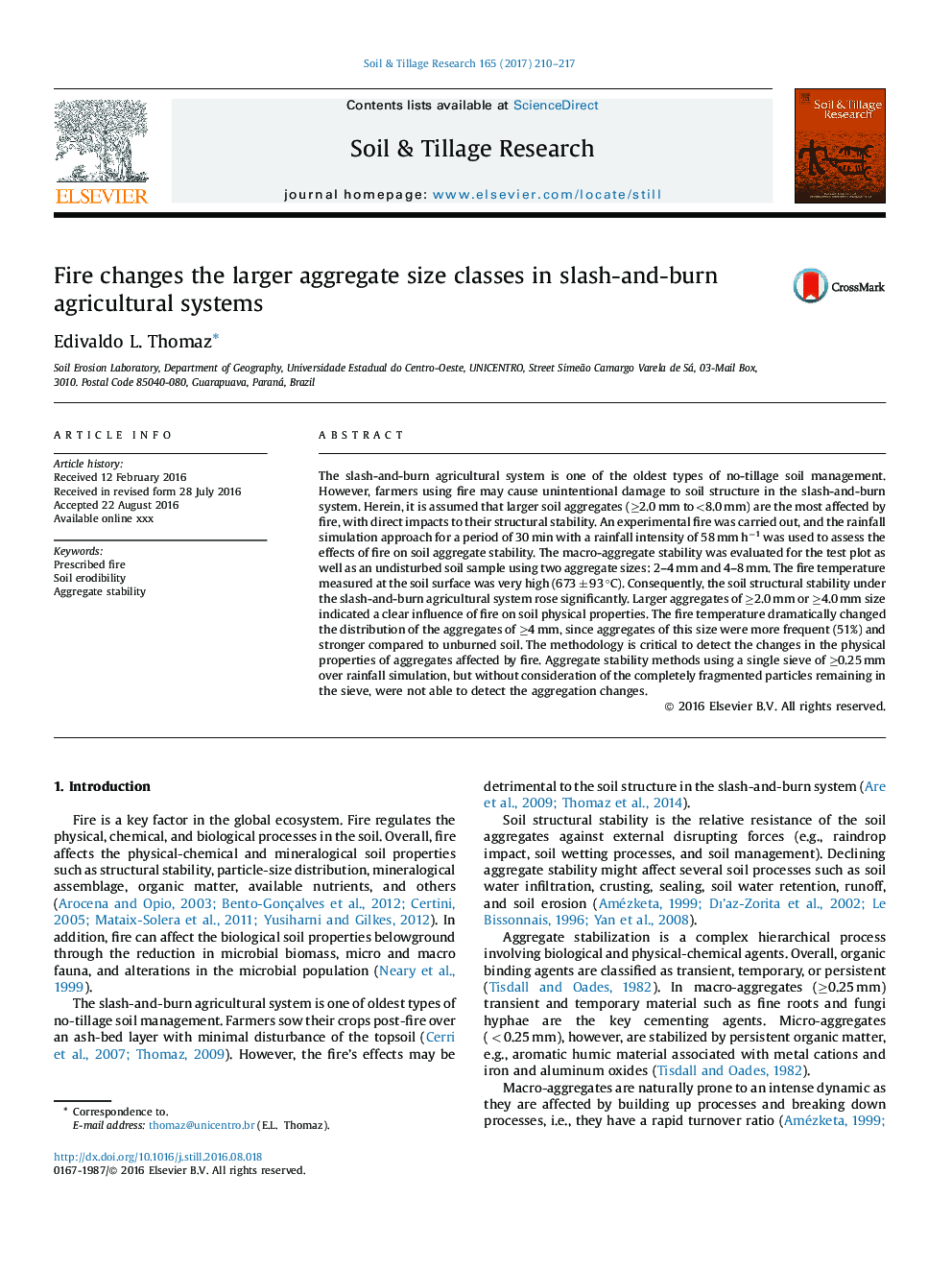| Article ID | Journal | Published Year | Pages | File Type |
|---|---|---|---|---|
| 6773317 | Soil and Tillage Research | 2017 | 8 Pages |
Abstract
The slash-and-burn agricultural system is one of the oldest types of no-tillage soil management. However, farmers using fire may cause unintentional damage to soil structure in the slash-and-burn system. Herein, it is assumed that larger soil aggregates (â¥2.0 mm to <8.0 mm) are the most affected by fire, with direct impacts to their structural stability. An experimental fire was carried out, and the rainfall simulation approach for a period of 30 min with a rainfall intensity of 58 mm hâ1 was used to assess the effects of fire on soil aggregate stability. The macro-aggregate stability was evaluated for the test plot as well as an undisturbed soil sample using two aggregate sizes: 2-4 mm and 4-8 mm. The fire temperature measured at the soil surface was very high (673 ± 93 °C). Consequently, the soil structural stability under the slash-and-burn agricultural system rose significantly. Larger aggregates of â¥2.0 mm or â¥4.0 mm size indicated a clear influence of fire on soil physical properties. The fire temperature dramatically changed the distribution of the aggregates of â¥4 mm, since aggregates of this size were more frequent (51%) and stronger compared to unburned soil. The methodology is critical to detect the changes in the physical properties of aggregates affected by fire. Aggregate stability methods using a single sieve of â¥0.25 mm over rainfall simulation, but without consideration of the completely fragmented particles remaining in the sieve, were not able to detect the aggregation changes.
Related Topics
Physical Sciences and Engineering
Energy
Renewable Energy, Sustainability and the Environment
Authors
Edivaldo L. Thomaz,
